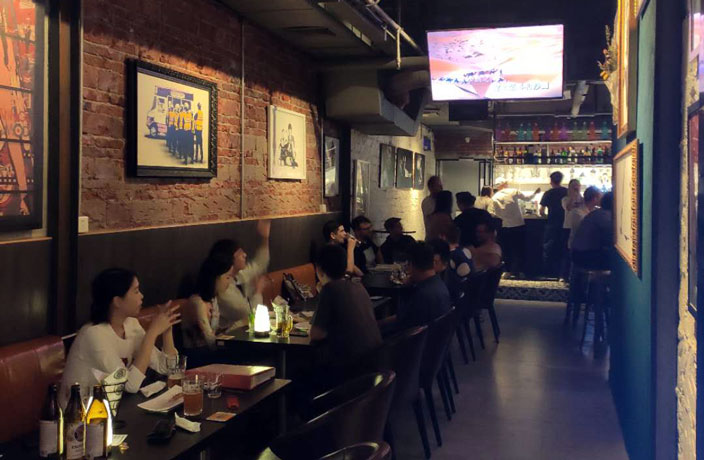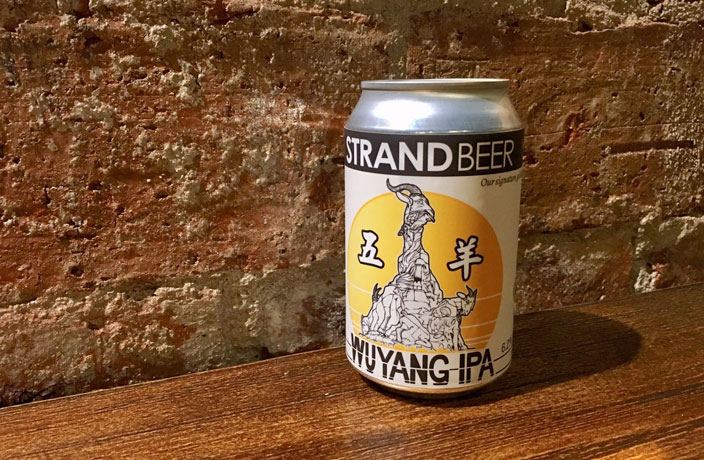 That's columnist Chris Foste is a bearded beer fanatic whose frothy pint glass of knowledge flows over with wisdom on the wetting of one's whistle.
That's columnist Chris Foste is a bearded beer fanatic whose frothy pint glass of knowledge flows over with wisdom on the wetting of one's whistle.
The New Year is here, turning a page to begin the next chapter of our Shanghai careers. Making China the home of your business can be a rollercoaster ride, full of ups and downs, joys and sadness, the ying and yang. However life decides to send you a wonderful wallop this year, focus on bettering yourself. Do some pushups, study some Chinese, munch on some vegetables, but most importantly, drink better beer!
Well-crafted beer has superior quality and flavor as compared to commercially produced rice-lagers, such as Qing Tsao or Budweiser. The flavors are more intricate and more attention was paid to the brewing process. However, mass-produced lagers retain a higher resilience towards flavor loss. Craft brew uses more amounts and higher quality ingredients that squeeze out elaborate details in the beer, and if not properly taken care of these details can be lost to off-taste-producing chemical reactions. Brewers take meticulous care to provide a high-end product, ensuring that every sip of the beer possesses the exact flavor intended, but transporting beer from country to country increases the risk of these off-flavors occurring in craft beer.
The majority of craft beers found this side of the Orient are imported, which means the distance traveled between brewery and bar can be thousands of miles. Throughout all this travel time, the beer exchanges numerous company hands, and anyone could proverbially stick their finger in the pie. The result is generally fine, but sometimes our darling craft beer takes a hit from one of its many flavor-reducing enemies.

Off-flavors are a real thing when beer is not properly stored or served, thus the best way to battle off-flavored beer in China is to educate yourself on what makes beer taste funny, and how to spot potential problem beers before wasting your WeChat wallet. Familiarize yourself with the three most prominent craft beer adversaries: heat, light and oxygen.
As luck would have it, babies and beer have plenty in common. Both are small, cherished, and the result of organisms reproducing. Thus, treating beer like you would a baby is a solid standard. Would you shake a beer? Probably not. What about shaking a baby? Don’t be a sicko. After shaking either of those, the head will turn out all wrong.
Heat in small doses is OK, but prolonged exposure can prove fateful. Ever left beer in a hot car during the summer? What about a baby strapped into a car seat? Notice how both things just don’t react the same after sitting in the heat for hours on end? Beer begins to oxidize when left in the heat, which sucks out all that malty, hoppy goodness and leaves the beer with a cardboard off-taste that muddles the flavor profile. Keep beer, and babies, out of heat for extended periods of time because it could lead to rather unappealing aromas or a crackling little crawler.
The next evil element that usurps our delicate drinks is light. Sunlight, florescent light, fire light, anything that allows our eyes to behold the wondrous shades of brewed malts hurts our foamy friend. Just think about laying a sleepy baby down for a nap in a tanning booth. Come back 90 minutes later and the baby will have developed an awful smell. In beer, we call this skunking. The beer aroma and taste will both cultivate a flavor that is similar to an actual skunk. Not bitter, sweet, or sour, just a flat skunk.

From the instant a beer is poured into a glass it immediately begins to lose its flavor due to light exposure. Fortunately, beer is commonly consumed quickly, thus the flavor doesn’t have enough time to establish any noticeable change. Beer requires about 90 minutes of direct light exposure to acquire a skunky taste. This doesn’t affect the average drinker, but if stored in a well-lit environment, entire cases can be ruined. This is why beer is most commonly served in brown bottles or cans. These prevent the most of light from reaching the beer, while other color bottles, such as green, blue or clear, provide very little protection from the light.
Ever wondered why the marketing for Corona says to put a lime in it? Well, have you ever had a clear-bottled Corona by itself? Funky Skunky.
The final foe of beer is oxygen. Just the same as with light, once your beer is poured into a glass, it is gradually molested by the air. Oxidation promptly begins and gives beer a cardboardy flavor, similar off-flavor produced with extend amounts of heat. Now just imagine pumping a baby full of oxygen, pumping and pumping until it’s full like a balloon! Inflate a baby with that much oxygen and it has not method to expel any of the air. This is the reason why draft beer uses C02 to pump beer through the tap lines instead of air.
Air in kegs will quickly deplete any good flavor in the beer, and draft beer is where you will most often find oxidized beer. Simply hooking up a new keg puts a tiny amount of air inside, and that little bit of oxygen will deteriorate the flavor, giving beer roughly two weeks of shelf life after tapping before flavor loss becomes significant enough to notice.

Keeping your beer clear of these three factors will keep home drinking clean and delicious, but in reality, all beer drinkers are at the mercy of the importer. How the importer of craft beer stores and delivers beer is one of the largest factors in maintaining proper beer flavors. With any bottle you pick up, make sure to check the label on the back and learn more about it. You can discover information about the importing company or brewery from the label, and it’s never a bad thing to be familiar with those handling your beer.
Much like knowing which babysitter is looking after your baby, because that girl down the street seems pleasant and kind, but getting wasted and using a cardboard box to hold the baby while she drives up to her second baby’s daddy’s house to throw bottles at him is not a becoming personality trait. Trust only the most responsible and respectable of caretakers!
Beer brands that are closely regulated by their importers, brewers, and distributors are the ones you should be drinking. Brands (and their distributors) like this include Boulevard (Duvel), Stone (Stone), Moody Tongue (Craft Republic), Mornington (Liquid Solutions), Brew Dog (Top Shelf), Shanghai Love (Vitae Spirits) and a few more. Know these labels and the companies that distribute them, and remember that just because a label is all black and flashy doesn’t mean it’s always good. Distraction is a phenomenal form of trickery.
#knowthedifference #drinkbetter
[All images courtesy of Chris Foste]
Read more of Foste's columns






















0 User Comments